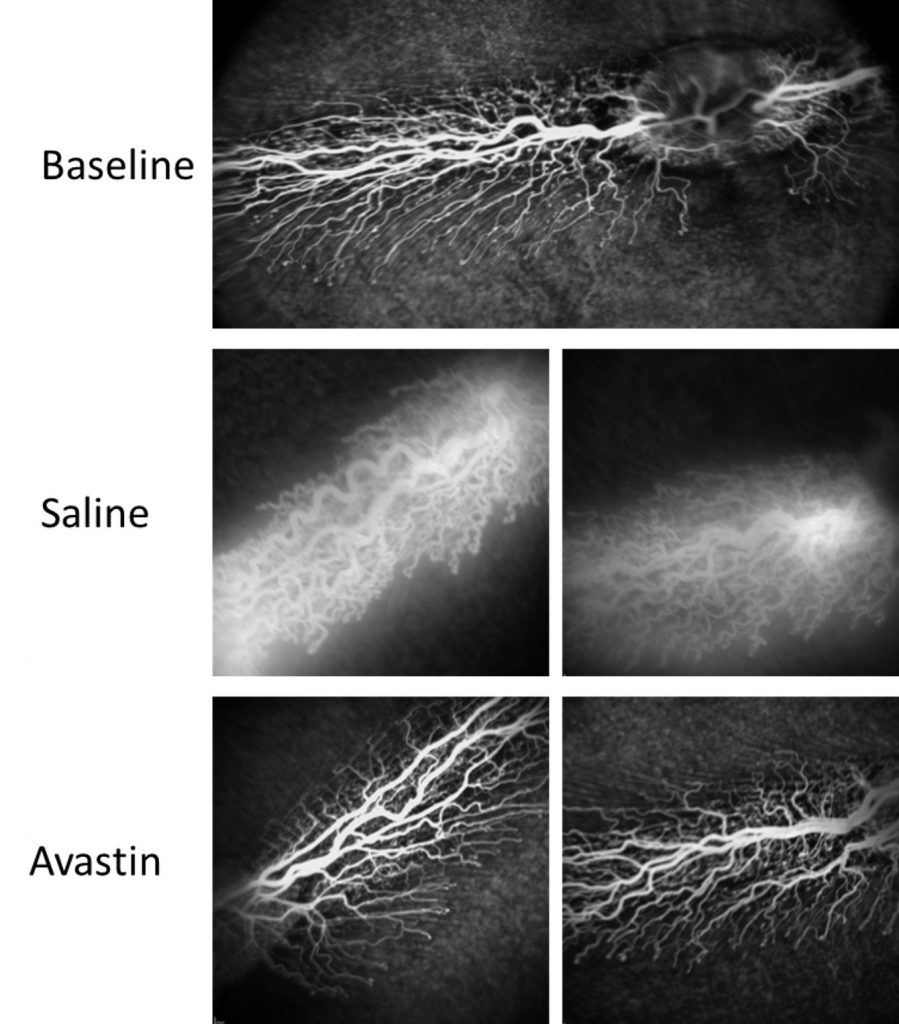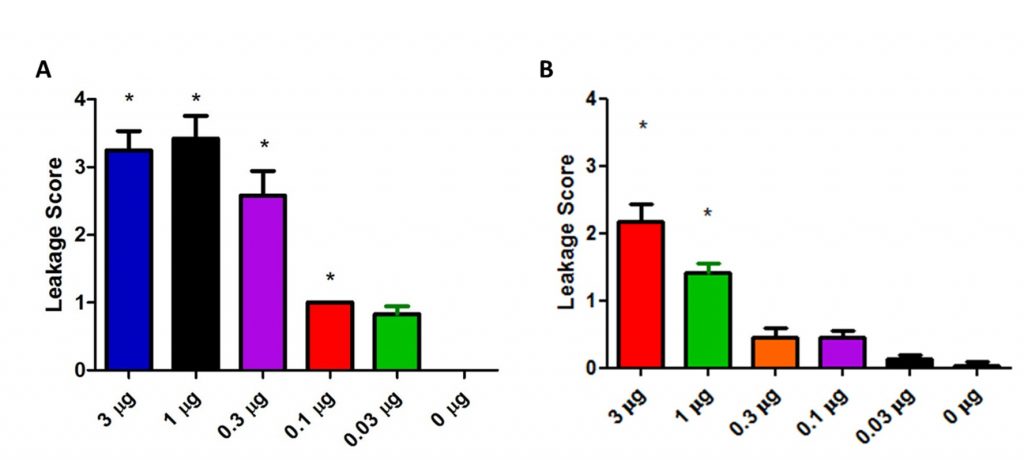Summary: The up-regulation of VEGF leads to abnormal retinal vascular growth and leakage that causes visual impairment. Intravitreal injection of VEGF causes a transient retinal leakage mimicking the like of wet AMD and diabetic retinopathy.
Model Description
Vascular endothelial growth factor (VEGF) is up regulated in wet AMD and diabetic retinopathy. This up-regulation leads to abnormal retinal vascular growth and leakage that causes visual impairment. Intravitreal injection of VEGF causes a transient retinal leakage mimicking the disease.
At Experimentica, we have fully implemented and validated rabbit VEGF-induced retinal leakage model with a clinically relevant reference compound and the most comprehensive list of read-outs.
| Animal species | Rabbits |
| Method of induction | Injection of vascular endothelial growth factor (VEGF) |
| Follow-up period | Typically up to 14 days |
| Route of compound administration | Intravitreal, topical, systemic |
| Read-outs | 1. In vivo imaging: – Qualitative grading of retinal leakage (fluorescein angiography); 2. Histology: – Post-mortem assessment of morphological changes both qualitatively and quantitatively. |
Outcomes and Read-Outs
In vivo imaging
Fluorescein angiography (rabbit; Heideleberg Spectralis). Retinal vascular leakage and leakage suppression can be imaged after VEGF induction and treatment

Dose range VEGF study showing the optimal dosage for retinal leakage.





